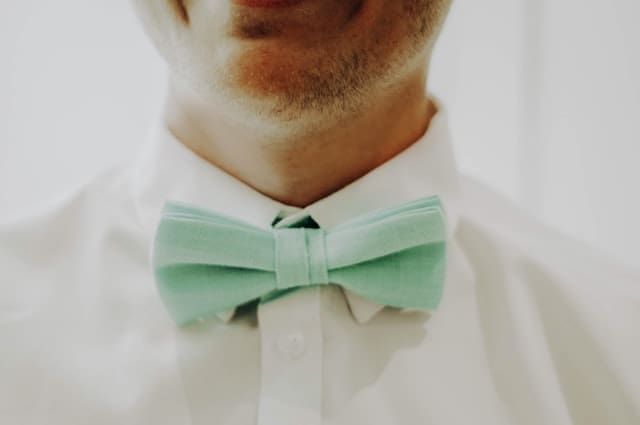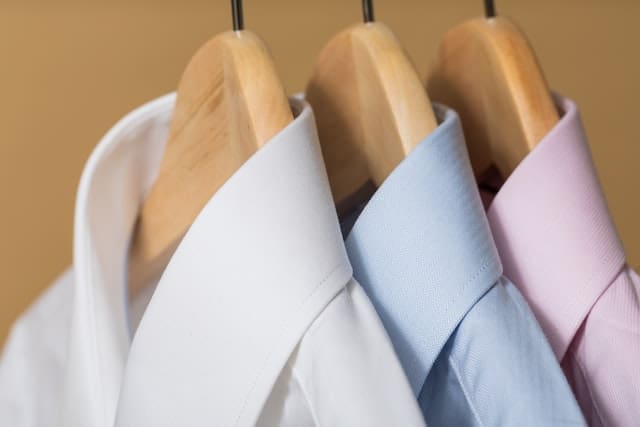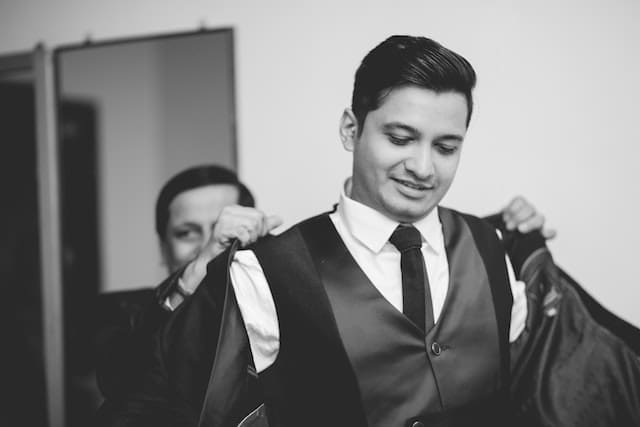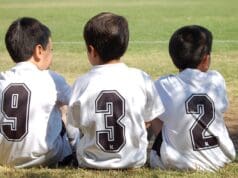For many, pandemic lockdowns left us all dressed-down with nowhere to go. At a time of uncertainty and upheaval, it was little surprise we sought comfort in a ubiquitous uniform of sweatshirts and sweatpants.
As in-person events make a return, many have exchanged staying in for dressing up. Whether we know it or not, what we wear significantly affects how we feel, and there’s something about men’s formalwear that feels suitably special when you’re headed to an event that calls for it. However, if you’re not sure what to wear, here’s our guide to dressing for the occasion:
What’s the Occasion?
In most cases, the dress code will typically be included on the invitation, but if you’re unsure, it’s perfectly acceptable to just ask ahead of time. Here is a guide to dress codes for each event type, from most to least formalwear:
White Tie
The most formal of dress codes is reserved for state dinners or high-profile award ceremonies. Here, the dress code is typically a tuxedo consisting of a long, black jacket and a vest with tails, a white collared shirt, and black patent shoes, with gray or white gloves as an option.
Morning Dress
Originally worn during the Edwardian era, morning dress is a romantic style evocative of period dramas and, as such, tends to be worn at British weddings (albeit solely by the groom and groomsmen rather than the guests) as well as at royal events and racecourses.
Black Tie
Black tie events normally occur during the evening: work-related formal dinners or charity dinners. This requires a tie (specifically a bow tie) in true or blue-black, with a matching vest or cummerbund worn over a white shirt and tuxedo jacket, with the exception of summer events (like cruise dinners), where you can wear a white dinner jacket.
Creative Black Tie

Often seen at formal events associated with the arts, this is formal, with a twist: a tux worn with the addition of a whimsical accessory or two: a colored or patterned bow tie, or a jacket in plush velvet. Style inspiration can be gleaned from stars like Jeff Goldblum, whose quirky-yet-suave style exemplifies this particular dress code.
Formal or Black Tie Optional
This one can be a little more difficult to gauge, but as a general rule, a dark suit and tie (rather than a full tuxedo) will suffice.
Semi-Formal Business
Either a suit and tie or dress pants are worn with a jacket and collared shirt – but always with smart, polished shoes. Semi-formalwear can be either dark or light, depending on the season and time of day. Darker colors tend to be used for evening and winter events, while lighter colors tend to be worn at either summer or daytime events.
Cocktail/Lounge
While certain events, such as cocktails or casual business events, make use of formal pieces such as ties or dress pants, they are not strictly classed as formal events. For upscale cultural events (such as gallery openings or the theater), cocktail attire consists of a tie and suit with peaked jacket lapels.
The Finer Details
Accessories
While the rules of formalwear can appear a little restrictive at first glance, less formal dress codes do allow for a little creative flair: a colorful pocket square, suspenders, or cufflinks, for example. As a general rule, keep the event’s overall theme and other attendees in mind.
Shoes
A dress shoe is perhaps best described as any shoe that doesn’t fall into the category of sneakers, sandals, or boots. Here’s a brief guide to formal dress shoes so that you can step out in style, whatever the occasion:
- Dress or opera pumps (sleek, slip-on styles with a slight heel) – white tie only
- Oxfords (slick, lace-up styles) – black tie; morning dress
- Albert slippers (dandyish slip-ons frequently seen in velvet) – black tie, creative black tie
- Patents (high shine lace-ups) – black tie, creative black tie
- Monkstraps (dress boots; spats) – morning dress only
When choosing shoes, avoid brown or tan, and stick with charcoal or black only. Be sure to also wear the appropriate shoes for the time of day. The same rules apply to suiting up for daytime or evening events; lighter colors for the former and darker shades for the latter.
Dress Shirts


There’s more than one type of dress shirt, including turndown or wingtip collar shirts, pique front, or hidden placket styles (where a seam covers the buttons. Pleated front shirts tend to be worn with cummerbunds.
Pique front (a style with two seams running down either side) shirts are often worn with a vest. Some are worn with studs instead of buttons. However, this style is traditionally seen on stiff-fronted shirts that tend to be seen less these days.
Coats
On especially chilly days, a wool coat, opera coat, or mackintosh fits the bill perfectly. Still, if you’ve spent time and consideration putting together your look, you don’t want to ruin it with an overly-casual jacket.
Cummerbunds
Many associate these with prom night, but for formalwear, they are intended to add a little color to the typically monochrome palette of men’s formal attire. For a subtler variation, choose plain black grosgrain fabric with a pattern.
Tips for Formal Attire
Learning to tie a bow tie or tie will prove useful for any future formal events you might want to attend. While an undone bow tie looks debonair, detaching a clip-on at the end of the night doesn’t have quite the same effect.
Pay attention to the lines of your outfit, making sure that the lapels of vests and jackets slope downwards in the same direction. If possible, get a straight-bottomed vest to avoid the hem peeking out.
While investing in a perfectly-tailored suit is an option, it’s not always within budget, so if you have a store-bought suit that doesn’t look quite right, take it to a tailor so they can make alterations for a perfect fit.
Featured Photo by DreamPix Photography: https://www.pexels.com/




